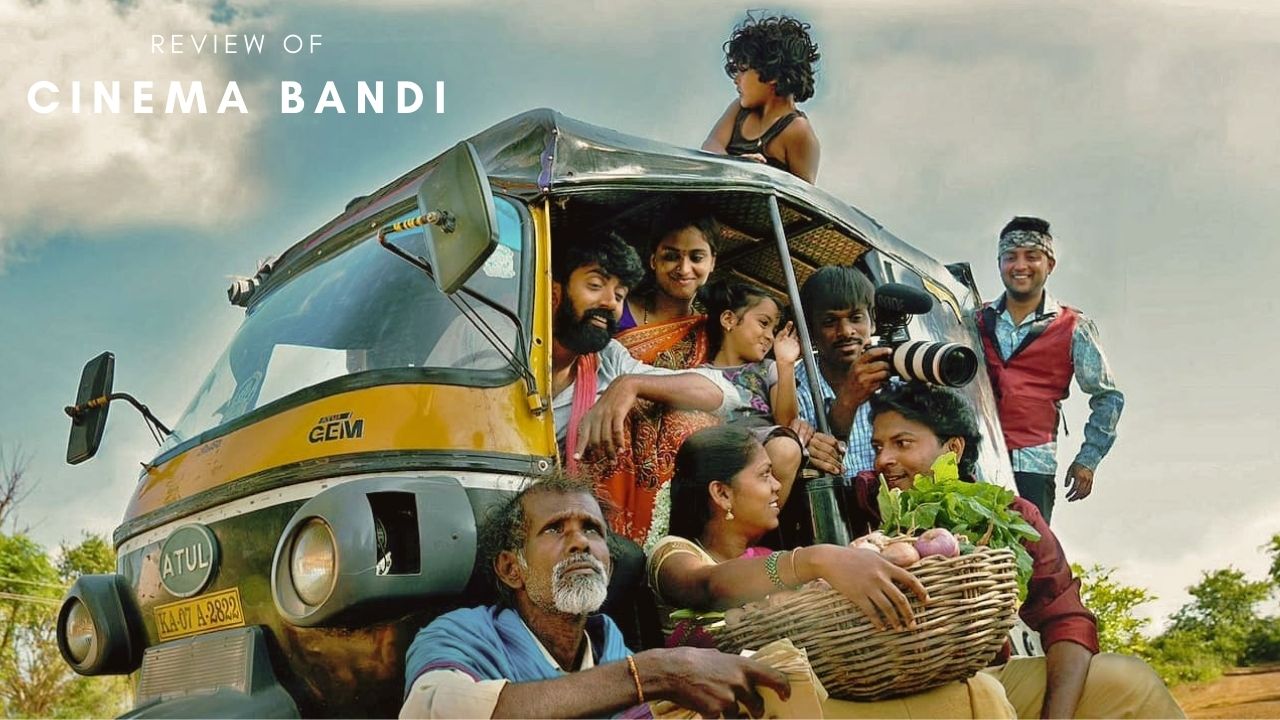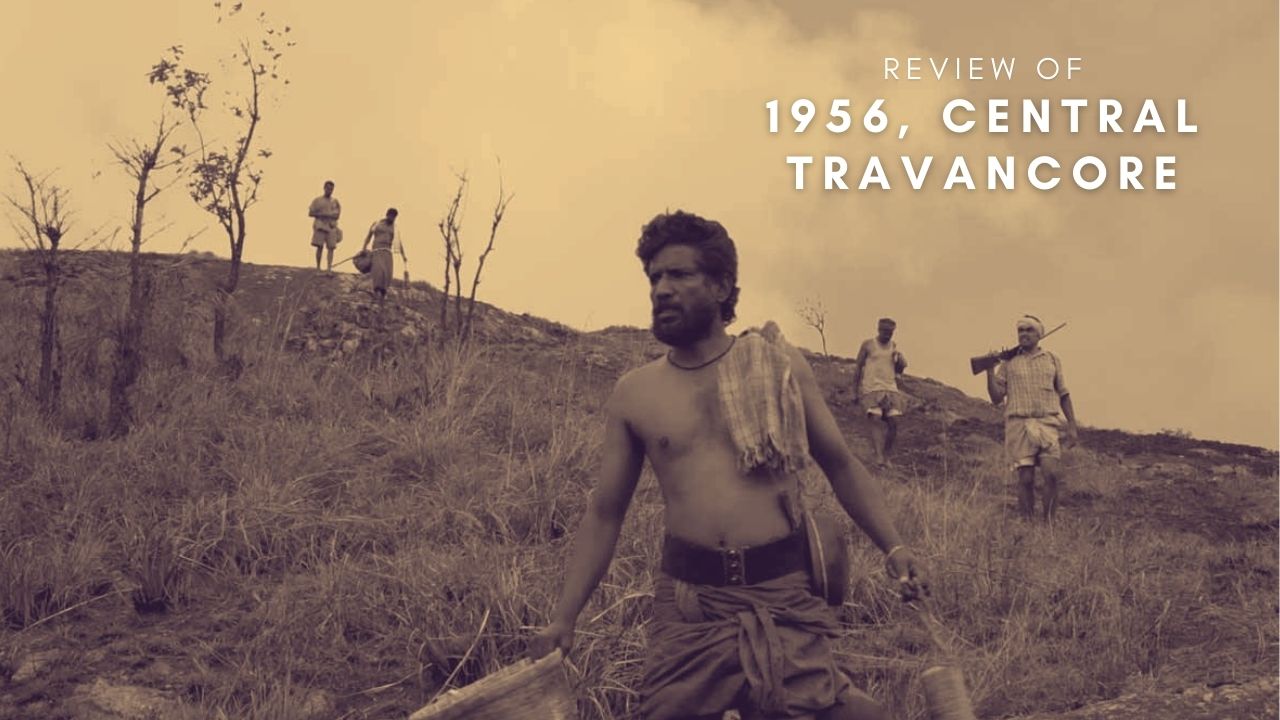
Kilkaari – A Platform For Art
“Art is the way we speak to our soul” goes a saying in Philosopher Lao Tzu’s ‘The Tao Teh Ching’. Whilst describing Art, Tzu says that Art is the only way one can reach a continuum with the all-encompassing life energy called simply the Tao. It goes without saying that Art is something which is beyond time and space and is the only definitive force which resonated boundlessly. Unfortunately, though, we as humans have been growing more and more distant to any Art forms. We’ve become slaves to readymade protocols, frame boxes, and patterns. And that hollowness has started to chew us up from inside, especially in these testing times of global pandemic. Luckily, we have a bunch of people who brave against the materialistic world and put their faith in ‘Artistic Resonance’ and invite people to join them in their pursuit to make the world a better world to live in. One such pursuit is Kilkaari,The Art Company
Based out of Hyderabad – Kilkaari, started by a naturally creative and soft-spoken artist & designer, Sreemukhi Mekala, is a platform that aims to bridge the gap between different forms of art and the public and bring art to every home. It was thus imperative for us to call up Sreemukhi and get to know more about this unique endeavor. The excerpts of our conversations follow…
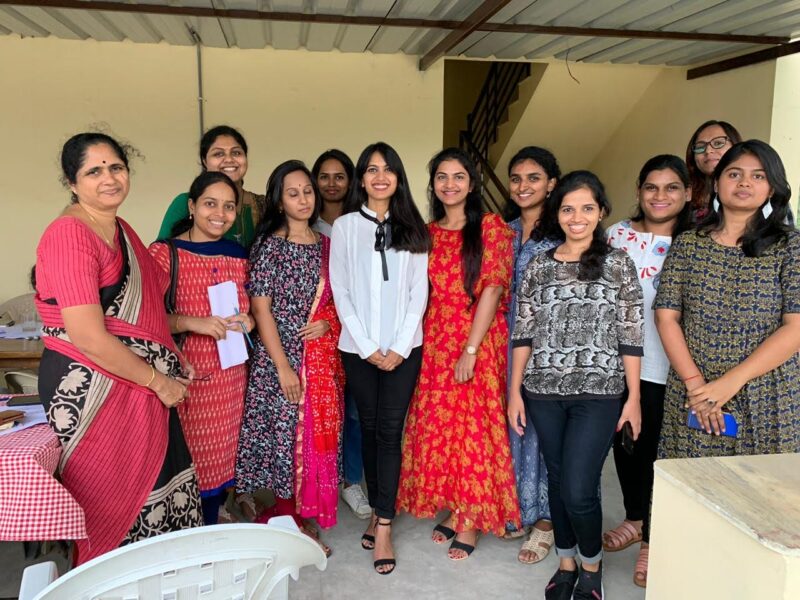
Kilkaari derives its soul from you Sreemukhi, an artistic influencer per se and so, it is imperative that we know more about you. Where does your story start in regards to Art and Communal awareness? And what does Art mean to you?
I’ve always been into art, for as long as I can remember, I’ve always painted. I was never interested in toys, just wanted paints and books. Though I did consider becoming a doctor, it felt like art was my true calling, and decided to pursue my education in it. Though my parents were a little shocked initially, they have been extremely supportive of everything I did and continue to do. Our Mom had dreamt of studying in Santiniketan when she was young, she insisted that I apply there. Santiniketan is about 3hrs from Kolkata, a small University town. Though I was reluctant initially, I feel in love with it the moment I saw it. It is absolutely beautiful. I’m very fortunate to have been able to study at a university that was founded by Rabindranath Tagore and to experience the kind of education I had. We studied under the best artists of India and some of the biggest scholars in the world.
I studied there for 4 years, lived there for 5 years. I was completely mesmerized by the beautiful, the peace, and the amount of space and time you are given to explore what art means to you. It is not your typical college. I spent hours making art. However, most of my fellow students, already knew plenty about artists from India, artists from the world and so many art movements. All I knew was Van Gogh, Picasso, and the name “Modern Art” though I didn’t really know what that actually meant! Unfortunately, back home, I never learned any of this in school. It is not part of the regular school curriculum. So I naturally had a lot of catching up to do – and I did. In the next 4 years, I spent only reading about art, understanding art, and making art. It has changed my mind and heart, to someone who is now able to see art in everything and everyone.
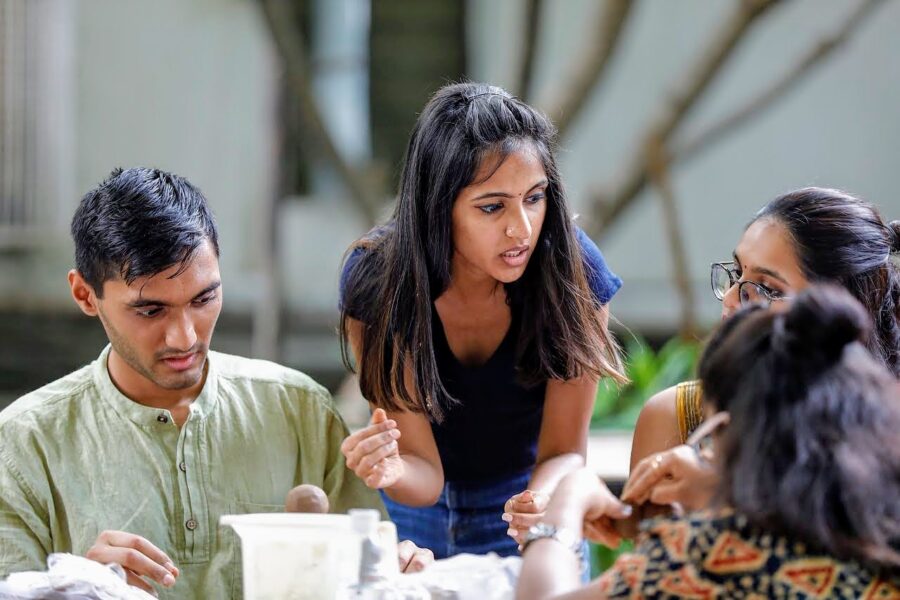
I was also very passionate about textiles since childhood. When in college, I was also learning design on the side. I was designing for friends & family and used the money I made to travel. After 4 years of college, when I got back, I wanted to get into a job that allowed me to work with everything I loved and also was exciting every day. I started doing costumes with a short film and then got an opportunity to work on two feature films as a costume designer.
By the end of the two films, I wanted to get back to art. It’s when I thought, why not make my dream of bringing art to people happen – what was I waiting for! That’s when Kilkaari happened!
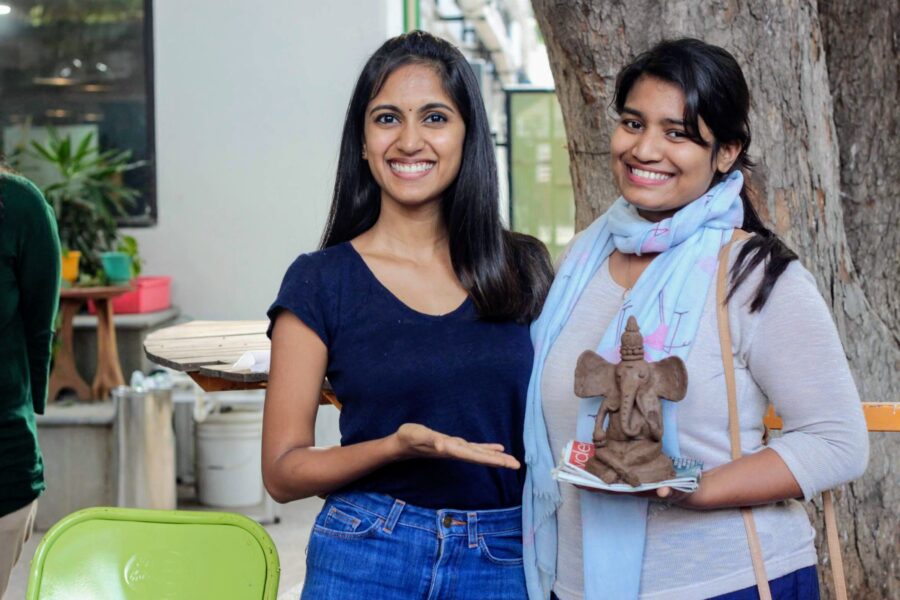
On that note, how does Kilkaari go about promoting art? And where does it find its objectives specifically? How do you go about it?
We started very simply, very basic, with a Facebook page. That’s all. All of the posters, I make myself. We shared them on Facebook, Instagram, and WhatsApp, to promote our events. We did our first workshop at Dirty Burgers, Film Nagar. The idea was to make art accessible, you know. You don’t have to be super rich or super sophisticated to be an art lover or own art or make art. That is the whole point of Kilkaari.
I know people who like art, they sit at home and draw or paint and really enjoy it. But they don’t really show it to anybody, because they think it’s not “correct”.
Kilkaari is for all those people who have some inclination to art, they don’t even need to have ever drawn anything in life before or made a paint, just the interest and intrigue for art is all. They can come, learn, feel good about making their art, and even confident enough to call it art and show it off!
We intend to teach everyone not just to paint, but also to teach them what it is to be an artist in terms of heart, soul, and mind. It’s beyond just the surface. The thought process of being an artist is showcased and propagated. In doing so, they not only understand how to make art but also appreciate it. Kilkaari is a place where people can come and explore their creative side, could be paintings, interior designing, visceral products, or even cinema, anything basically but through the media of Art.
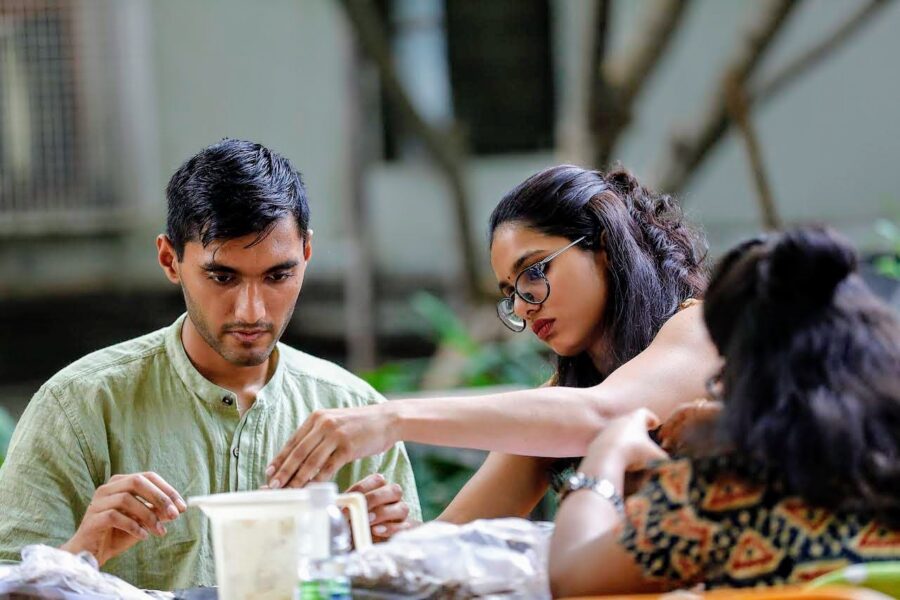
We introduce different art forms in our workshops. We also want to promote folk arts which are declining. We only know something like Dokra or very popular ones that have been given a platform. But otherwise, every place has its folk art. Not everyone knows what Charminar folk art is, I went through Charminar and found the local Nakashi, which we did for the class last week. Apart from that art, there are many other art forms that we as common people don’t know about. If just Charminar has so many art forms, you can imagine what everyplace has. Through Kilkaari we can introduce a platform for folk art. Apart from folk art, we also connect with the young artists or renowned artist to the common people, for them to know art better. Kilkaari stands for this collaborative and communal understanding of art.
That is an interesting way to go about Art propagation. How do you manage to do that? How do you manage to tell people that this is how you understand Art, and what are the methods or processes by which you do so?
Just through conversations. We show them artwork of different artists and why they’ve done it, what happened behind the paintings, what were they thinking when they did it. There are some paintings which are priced at millions of dollars, people sometimes look at it and say, “I can do this too.” But it’s not about what was done, it’s about when it was done and why it was done. We initiate such a conversation where they understand that art is about expressing an idea or a narrative and make them tap into that feeling. We basically make them see the art in everyday objects around us, be it an aesthetically pleasing mobile phone, or a visually inspiring logo, and so on. You see, we have always as humans depended on Art to communicate from the Neanderthal times. The instinct to draw is almost 60,000 years old basically. So everyone is equipped to know it instinctively.
The idea is to make them believe that they have art in them. Your art doesn’t have to be about looking perfect, but the thought behind it might be so personal and unique that it’s worth being expressed. So, we tell all these things to people. I think by the end of it all, their perception towards, not just understanding Art, but towards life in general evolves. I often have some fantastic discussions during the sessions. Everyone has a lot of questions; some people get into the discussions, partake in it, and start answering them.
It’s really amazing how a little bit of exposure can trigger the mind to think in so many ways that you haven’t before. Most people come, and we show them art that they’ve never seen before and suddenly they are thinking in a new manner altogether. In understanding Art, the potential of the human mind, I don’t think it can be quantified.
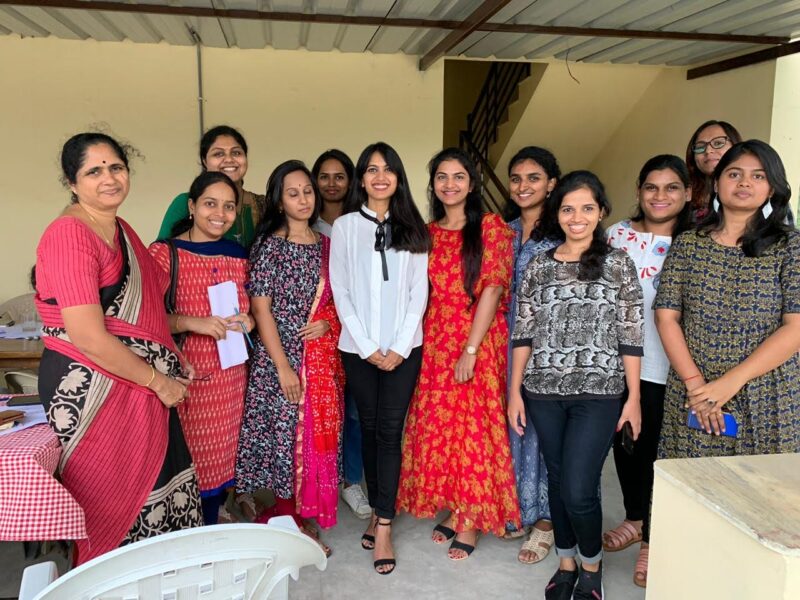
On the topic, since the present pandemic situation does not allow for extensive workshops to be held in a physical sense, how have you folks adapted to it?
Well, I’ve taken up the idea of virtual workshops through Instagram live, which has actually been a positive step forward. Initially, I was a bit skeptical going online, cause I felt that the participants might not get the best out of it, since there is no interaction and a lack of communal vibe for it. However, I kept getting a request to conduct a workshop online, and that’s when I thought I should give it a shot. Fortunately, most have been super happy because of it.
Sometimes, however, there are some hurdles that cannot be overcome in virtual sessions. You see, sometimes people need to have an environment to encourage them to focus. A few of them are scared to do it as well. So I may sometimes have a problem reaching out to them in such situations. But usually, I do manage to encourage them.
Apart from these direct workshops, I’ve tried a few other things as well. During the pandemic period, I’ve done these IG interactive video conversations with international artists which have found a really good response. I’ve tried to encourage everyone to pursue Art, as it is a therapeutic medium in these difficult times. I try to repost their paintings or artworks etc. The virtual workshops will now mostly be a regular thing on Kilkaari.
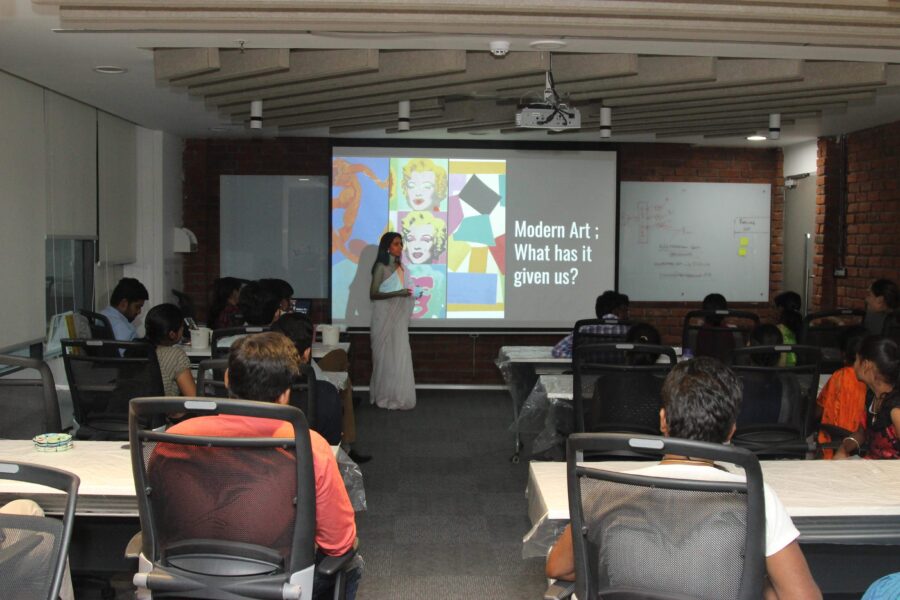
In doing several workshops, we were curious to know how do you go about bringing these artists from different disciplines on board? Is there any specific thing you are looking for? How do you select them?
We ensure exclusivity. Each time our theme is different, the medium is different and each time we try to target a different set of audiences. The first time was a purely art-based thing. The metal workshop we did, later on, was with an intention to bring to people art forms they aren’t aware of, specifically local art forms. The artists we got from Charminar, nobody even knows that it happens in Charminar. We went, spoke to them, brought them. People had a chance to interact with them, know them, and their craft. They physically sat and did what they do.
Each time we get a different type of audience and based on that as well, we construct a thematic, depending on this, we decide who we invite for the respective workshop. For example, we did a workshop with MBA students in Creative Product Design & Design Thinking. We showed them how today’s most influential Logos are influenced by the styles of famous paintings which were done centuries ago. In this workshop, we were trying to show Business students how art has influenced and how it is a big part of branding and marketing. That’s a completely different and commercial angle of art. The aesthetically sensible logo & product designs and how marketing goes forward with it. Designing thinking is something we worked on as well, where we could inspire them to think in terms of user accessibility. It could be app designs, intuitive OS designs, package colors, and more, in terms of their brand.
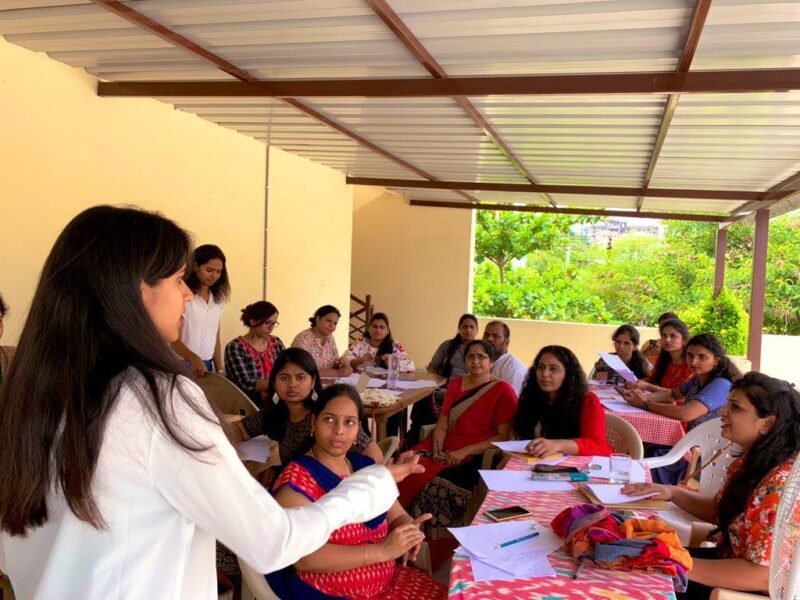
In a workshop we conducted in Tamil Nadu, we had attendees who belonged to different walks of life. A person belonging to the fishing community was so impressed by our workshop that he brought his six-year-old daughter to attend it as well. That to us is an objective fulfilled. It’s all about that resonance. We also price the sessions so that they are accessible to everyone as well. Thus, our workshops both physically and virtually, are attended by different people.
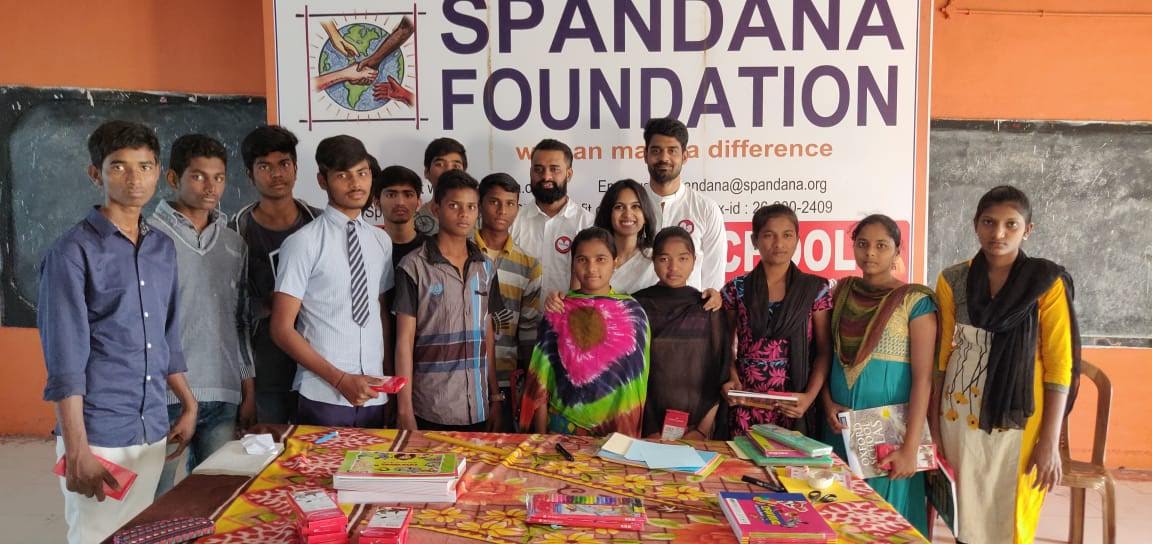
Continuing so, could you explain to us any particular session that you’ve done under Kilkaari just to give us an idea as to how things work?
For example, the first session was modern art, for which we took the theme of Picasso, he is the founder of Cubism. So, you will see a lot of his paintings, what he does is that he breaks down a structure and restructures it differently. So, what we did was, we paired up the participants into groups of two. If I was your teammate then I had to draw a portrait of you and you had to draw a portrait of me. So, when we ask them to draw a portrait it doesn’t have to look like you.
Rather it must reflect how I am perceiving you. If I draw your portrait, it can be that I just saw draw a face with glasses, and I don’t draw any other facial features, that’s up to me. The same goes for you as well. Once they finish the portraits we ask them to cut them up and restructure them differently. And when they started to do that, they started to think about how to place each element. When they feel that their composition is complete, they stop. That way they welcome art more into their life.
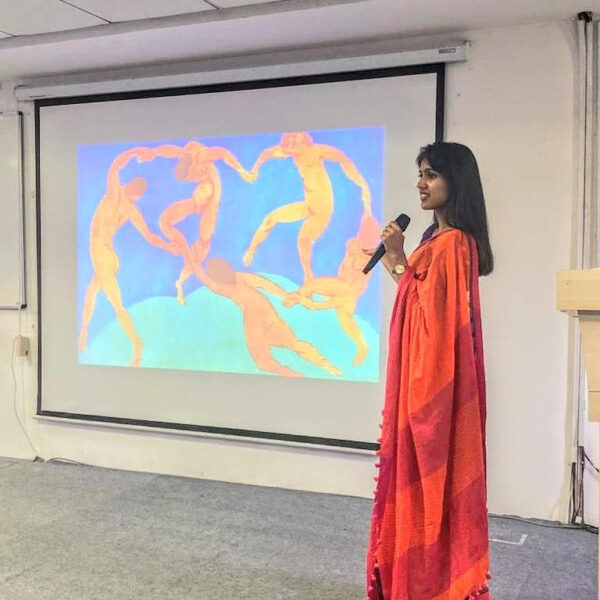
That’s something entirely unique. Now when you want to promote the artist further, how do you go about doing it?
We do maintain a channel of communication with the participants of the previous sessions. If we have people who are interested to learn it further then definitely we can do another workshop where we do an advanced level. Or if there is a set of people who have missed a workshop we get in touch with them as well.
Everybody who comes for the workshop is on a WhatsApp group. We keep having discussions; people also feel that they have a space to talk about the things they see. So, they keep coming back. People who came for one workshop come back for another workshop. Or the other day we had one of our participants who came just to see, and he brought his cousin along and made him do the things. Most of them are different. We aren’t limited to one category of things.
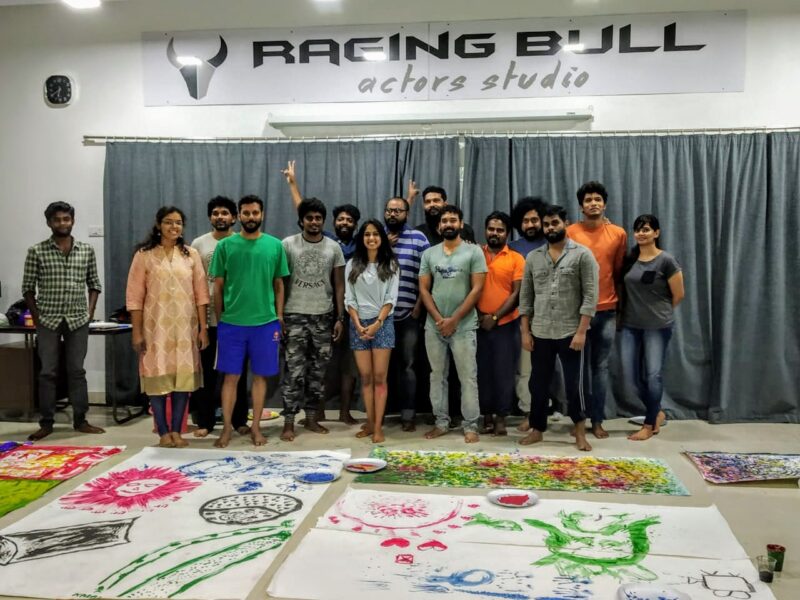
Apart from Kilkaari, since you are Costume Designer by profession, are there any film projects where we can see your work come alive soon?
Well, yes. I am doing the costume designing for a film title ‘Ranga Maarthanda’ which is the official Telugu remake of renowned Marathi film ‘Nata Samraat’. This project is being helmed by Krishna Vamsi garu and stars Prakash Raj sir, Ramya Krishna garu and Brahmanandam garu in the leading roles. Although the shoot of this film has been momentarily halted, it is one of the most interesting projects that I’ve picked. Also, interesting because it is not your conventional commercial film. The designing needs required a certain sense of rustic and earthy nature to it. There’s no bling in the film. It’s very authentic. So the colors and the fabrics of these costumes have a contextual appeal to it.
What’s the vision for Kilkaari, this year or the next coming year? Where do you want to see it?
For now, I want to continue doing workshops, slowly open a permanent space where we can do all our workshops, give out studio spaces, open a very unconventional and very open art space/gallery that Hyderabad has never seen. A place where the whole Kilkaari community can come along. Also, I want to personally reach out to corporate houses for workshop collaborations so that we get financial stability as well.
We want to encourage upcoming, young artists and give them a space they can explore their creativity and engage with the public. I also want to curate unconventional art shows, mela, festivals and invite artists from all over the world whenever it is possible. Bring art from the world to here and vice versa. Do occasional art camps and art trips. Maybe someday even open a very radical art school.
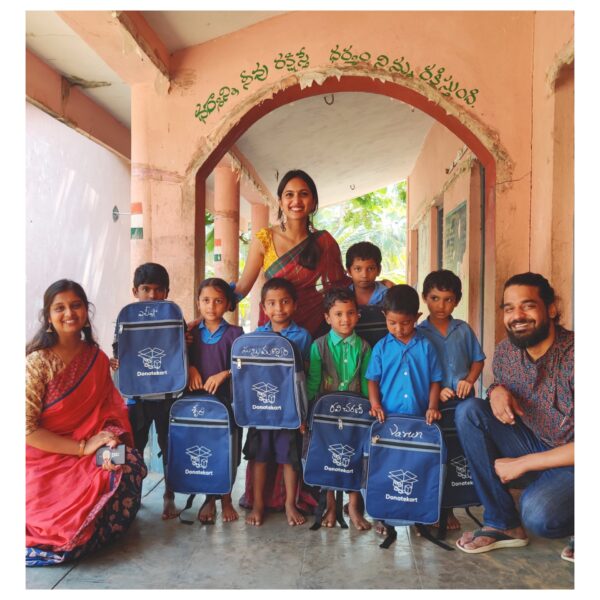
So folks, that was Kilkaari. Check out their Instagram for further workshops, and do try some. You never know what you’ll discover about yourself. Till then, stay safe and stay happy.!!

